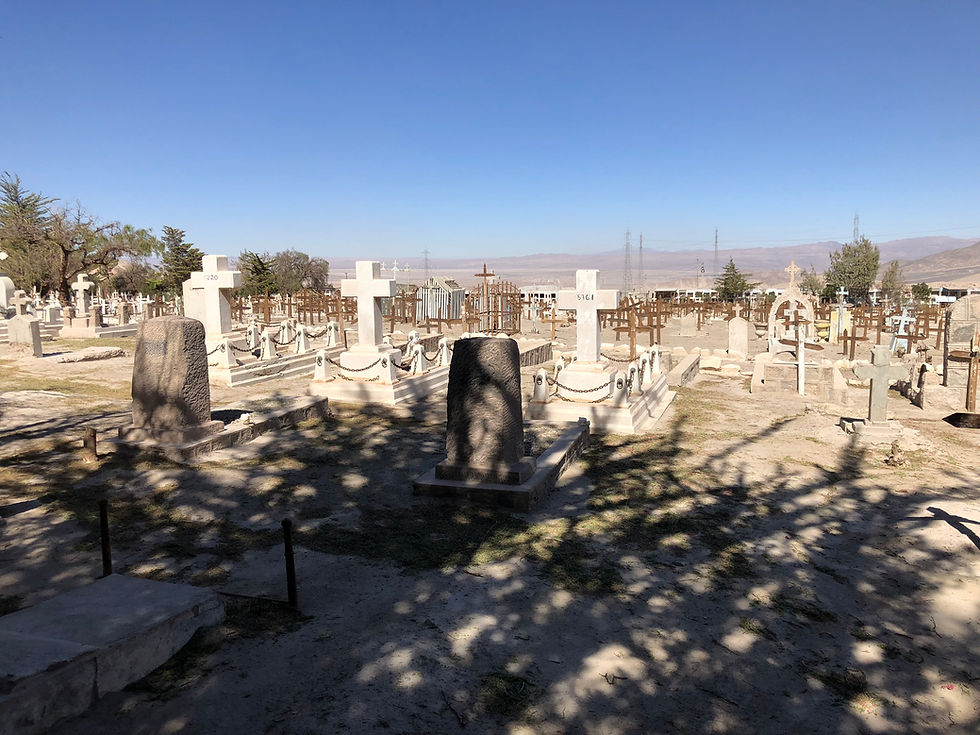Sheffield and Donetsk have more in common than you think
- Lipmann Walton & Co Ltd

- Feb 13, 2023
- 4 min read
Updated: Apr 7, 2023
We called my godfather 'skip man'. If he saw one parked by a house in his street, nothing could stop him. The sight of it drew him towards it like a magnet. In no time he was peering in in search of treasure. With his findings he would build his special brand of home made furniture which he called ‘Skippendale’.
In America, they call it dumpster diving apparently.
Inspecting pyramids of mixed metal in scrapyard bays has the same effect on me.
Last week, I went north with our new Ukrainian employee to help her understand our business. ‘What could be better than a trip to Sheffield?’, I thought, and to explain where we were going, I said, ‘I’m going to show you the Donetsk of the UK!’
Returning later that day, I discovered there was more truth to the Donetsk story than I had thought. The Ukrainian town is in fact twinned with Sheffield and established by a Welshman called John Hughes (1814-1889). A successful iron maker at the Millwall Iron Foundry, he had made armour-plating to clad the wooden ships of the British Navy. This had come to the attention of the Tsar who subsequently asked Hughes to fortify the battlements of Kronstadt (now Kaliningrad) on the Baltic.
It was through this connection that Hughes came to hear about the then unexploited Steppe in the Donbas where all the ingredients for iron-making existed - coal, iron ore, and water.
So, in 1869 Hughes set off from Wales with a hundred fellow Welshmen - coal miners, iron makers, and their families - as well as eight ships of equipment. He took everything required to live, and develop ironmaking. Arriving at Taganrog on the coast, this hardware was drawn 100 miles across the snow by ox trains. (A trip that 150 years later, before the present war, on the T0507 might take two and a half hours).
The resulting settlement was named Yuzovka (Hughesovka) after John Hughes, later re-christened Stalino (steel town) before its present incarnation as Donetsk. As it happened, the first renaming occurred around the time that Stalin (Joseph Vissarionovich Dzhugashvili) came to power, so the local leaders considered it politic that Stalin should believe their town was named after him.
Hughes and his descendants stayed right up until The Revolution and then left. He had taken a patrician attitude, founding a hospital, schools, and an ale house. But in post-revolution times, it was known as a frontier town, rife with crime, drinking and poverty. During the Holodomor it was abject.
Our new employee comes from Kyiv, and studied at the Antonov University, connected to the famous aero-maker renowned for its production of the largest heavy-lift aircraft in the world – the AN-225 Mriya (dream) destroyed early in the present war. But how better to explain the thrill of deciphering the value in a pile of twisted sheet and plate, or understanding the transformative processes of metal making, than by trailing round the yards of Sheffield?
‘Sheffield is not what it was’, I’ve often heard people say, when referring to Sheffield’s once indelible synonymity with metal.
How wrong!
I exhorted our new student, therefore, not be distracted by the sight of the new Next and Ikea stores, or Carluccio Restaurant, in Sheffield’s Meadowhall, or the new warehouses off the Attercliffe Road.
When I got back in the car a few hours later, we'd done so much yard-stomping there were metal turnings and splinters glinting in the foot well. Behind the red brick, razor-wired walls in the so-called poorer areas, those ‘in the know’ realise it is only snobbery that prevents the outsider from understanding the usefulness of the work behind these steel gates and alarms.
Our new employee was given the type of Sheffield welcome wherever we went that could bend metal. We saw such things as directionally solidified turbine blades and how they should be treated for reverting. We looked at casting scraps, noting the difference between cast and wrought materials, how to recognise spillings and their purpose in blends; saw incoming titanium scrap turnings and solids, the processes required to crush and de-grease, how charges are made, watched the open-hearth induction furnace doing its work, and listened as hot poured metal cracked and creaked in its moulds as it cooled and solidified.
Soon we hope our new metal-merchant-in-the-making will pick up the turns of phrase rich in colour and descriptive of work that make Sheffield the cultural centre of the metal trade.
It won’t be long perhaps, before she enjoys seeing solid pieces of metal stirred into a pot and thinks of getting bladdered in the evening.
Sheffield is a long way from today’s Donetsk but, suddenly, when you think of the Hughes story, we see better what connects us than that which separates us. Even the name of each town's football team has a message for us, for ‘Shakhtar Donetsk’ means the ‘Donetsk Miners’ while Sheffield United Football Club's nickname is ‘The Blades’ - both by deduction, twinned in the metal supply chain.
It makes what is presently taking place there seem so much closer,
and even more senseless.





Comments